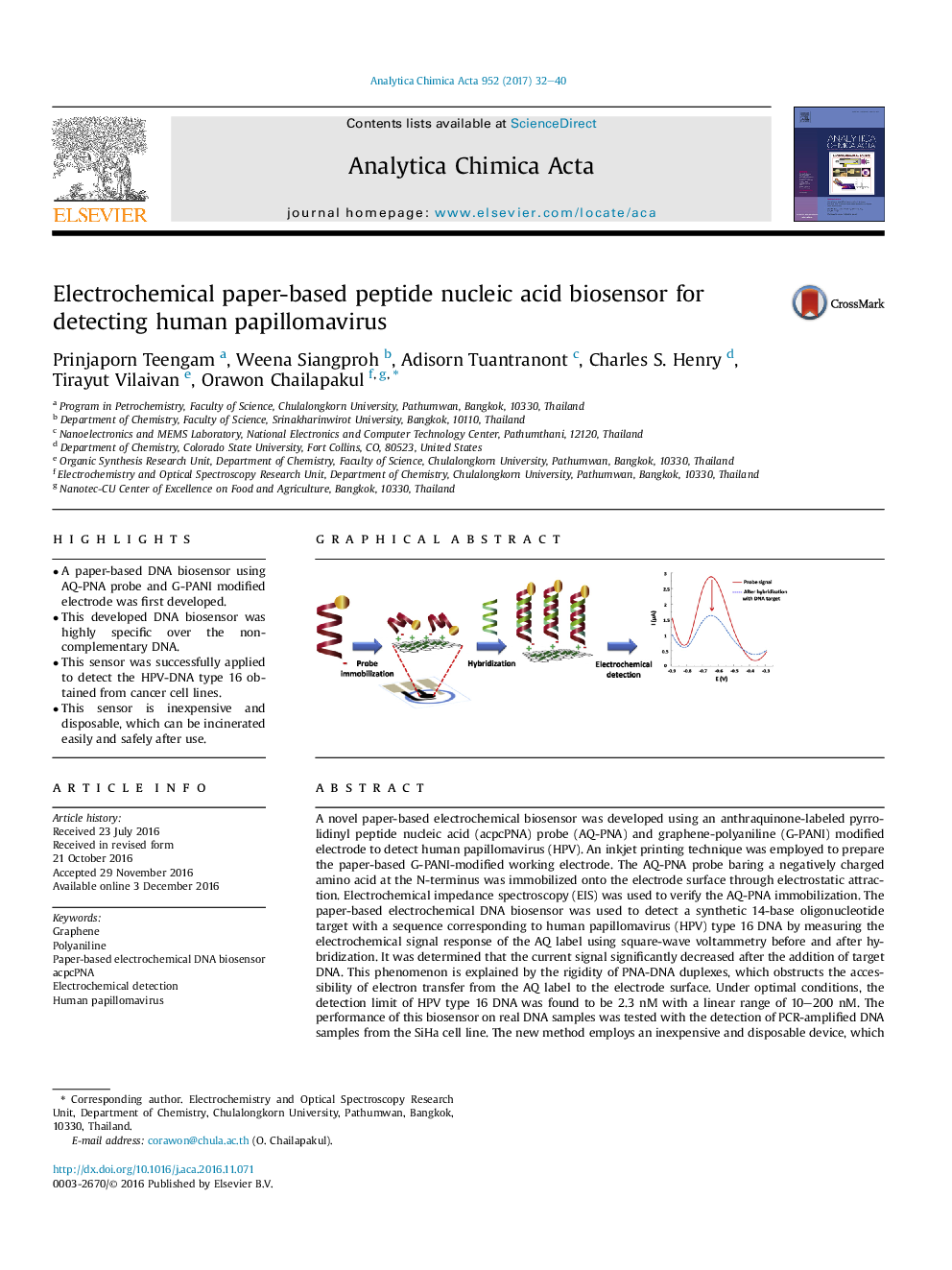| کد مقاله | کد نشریه | سال انتشار | مقاله انگلیسی | نسخه تمام متن |
|---|---|---|---|---|
| 5131128 | 1490880 | 2017 | 9 صفحه PDF | دانلود رایگان |

- A paper-based DNA biosensor using AQ-PNA probe and G-PANI modified electrode was first developed.
- This developed DNA biosensor was highly specific over the non-complementary DNA.
- This sensor was successfully applied to detect the HPV-DNA type 16 obtained from cancer cell lines.
- This sensor is inexpensive and disposable, which can be incinerated easily and safely after use.
A novel paper-based electrochemical biosensor was developed using an anthraquinone-labeled pyrrolidinyl peptide nucleic acid (acpcPNA) probe (AQ-PNA) and graphene-polyaniline (G-PANI) modified electrode to detect human papillomavirus (HPV). An inkjet printing technique was employed to prepare the paper-based G-PANI-modified working electrode. The AQ-PNA probe baring a negatively charged amino acid at the N-terminus was immobilized onto the electrode surface through electrostatic attraction. Electrochemical impedance spectroscopy (EIS) was used to verify the AQ-PNA immobilization. The paper-based electrochemical DNA biosensor was used to detect a synthetic 14-base oligonucleotide target with a sequence corresponding to human papillomavirus (HPV) type 16 DNA by measuring the electrochemical signal response of the AQ label using square-wave voltammetry before and after hybridization. It was determined that the current signal significantly decreased after the addition of target DNA. This phenomenon is explained by the rigidity of PNA-DNA duplexes, which obstructs the accessibility of electron transfer from the AQ label to the electrode surface. Under optimal conditions, the detection limit of HPV type 16 DNA was found to be 2.3Â nM with a linear range of 10-200Â nM. The performance of this biosensor on real DNA samples was tested with the detection of PCR-amplified DNA samples from the SiHa cell line. The new method employs an inexpensive and disposable device, which easily incinerated after use and is promising for the screening and monitoring of the amount of HPV-DNA type 16 to identify the primary stages of cervical cancer.
163
Journal: Analytica Chimica Acta - Volume 952, 1 February 2017, Pages 32-40